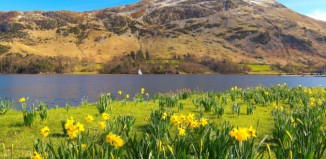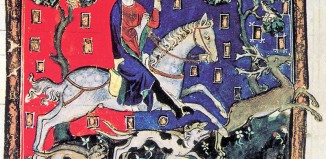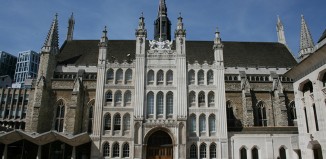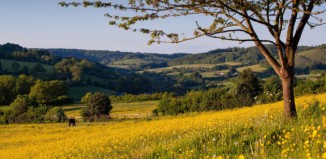Magna Carta: Take a walk around Runnymede
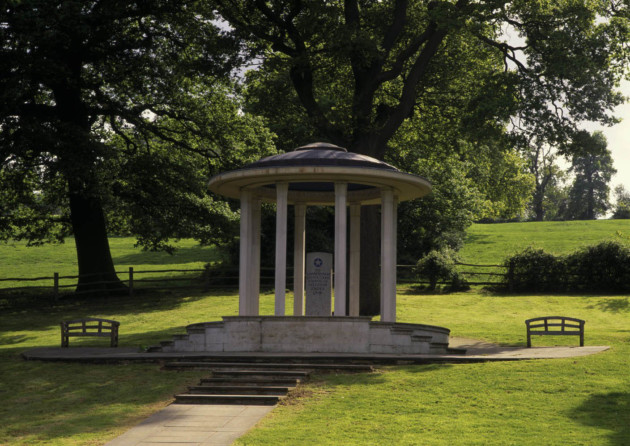
It was at Runnymede near Windsor where democratic charter, the Magna Carta, was signed by King John in 1215, an action that symbolised the beginning of English civil liberties. Today, visitors can take relaxing walks through the diverse 300-acre natural landscape, or even picnic by the River Thames.
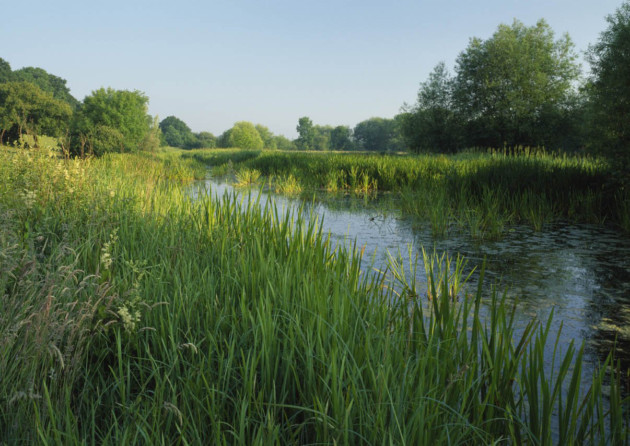
Magna Carta: Runnymeade
The ancient water meadow where the most powerful people in the country gathered to make history in 1215, is today blessed with fine views along the Colne Valley to the north, and adorned with monuments to lives sacrificed to preserve freedom. Each memorial can be explored on one of three heritage walks promoted by the National Trust, manager of the landscape since 1932.
No physical traces of medieval events remain across this tranquil area which was simply chosen by King John for its accessibility to London, the river and the royal headquarters at Windsor. It was perhaps as untamed and peaceful a setting then as it is now. Rich in flora and fauna it was spared from any development owing to its proximity to the unpredictable Thames, while its meadows were preserved for cultivating wheat.
Runnymede’s only close shave was during the industrial age when in 1914 a visitor observed: ‘The river bank is spoiled by gas works, bungalows, and other excrescences for part of the way… if the public do not take heed they may soon awake to the fact that Runnymede has been covered with suburban housing.’ Prime Minister David Lloyd George heeded this comment and in a calculated bid tried to sell Runnymede – halted by overwhelming public outrage. Its future uncertain, the land was purchased in 1928 by Sir Urban Broughton MP, whose intentions were to keep it as a natural haven. After his death the following year his wife Cara commissioned Sir Edwin Lutyens to design two lodges within the landscape in his memory, shortly afterwards gifting Runnymede to the National Trust.
Take a stroll in Ankerwycke Park
Take in the charms of Runnymede’s neighbouring 148-acre Ankerwycke landscape park on a circular walk. Purchased by the Trust in 1998 as a protective buffer to Runnymede, Ankerwycke complements the historic site
Time: 30 minutes
Terrain: Across meadows. Boardwalks are provided at muddier spots. Kissing gates are provided at all boundaries, no stiles; generally flat.
1. Start from the car park at Ankerwycke, Magna Carta Lane, grid ref: TQ002732.
From here, make your way through the kissing gate (to your right as you enter the car park), into the meadow, where cattle are often grazed. Observe any signs as you go. Once through the gate, turn left and walk along the field boundary. Continue through the farmer’s gate, past the small cedar tree. Ankerwycke hosts an array of wildlife. Listen out for the green woodpeckers laughing call, and watch for emerald and large red dragonflies often seen darting between the ponds and paths.
2. Walking over the boardwalk and through the kissing gate, you are now in Little Day Meadow, and will be facing a large London plane tree. Turn left here, and walk towards another kissing gate. You’ll pass the ruins of 12th-century St Mary’s Priory, once home to an order of Benedictine nuns.
3. Go through the gate, across the track to the next kissing gate. You are now in The Park, newly opened to the public in 2011. Walk straight ahead, following the naturally made trail in the grass. The iconic 2,000 year old Ankerwycke Yew here is said to have witnessed the sealing of the Magna Carta by King John in June 1215 and to be the location where Henry VIII met Anne Boleyn in the 1530s. It has a girth of 26ft!
4. The trail here veers round to your right. Continue along; within the line of trees at the other side of the field is a kissing gate. Go through it and at the path turn right. You are now walking alongside the Thames.
5. Following the circular walk trail marker posts, the path bears right. Continue through the kissing gate, into Ankerwycke Mead. Walk through the meadow with the black walnut tree on your left.
6. Go through the kissing gate, and walk along the track through the woods, with the old fish ponds on your left. You will come out into a small meadow surrounded by trees, with St Mary’s Priory on your left and the famous yew on your right. Continue on the path, over a small bridge and into the avenue of grey poplars, until faced with a large gate. Turn left here, through the kissing gate. You are now back on your original route where you follow the route back to the car park.

